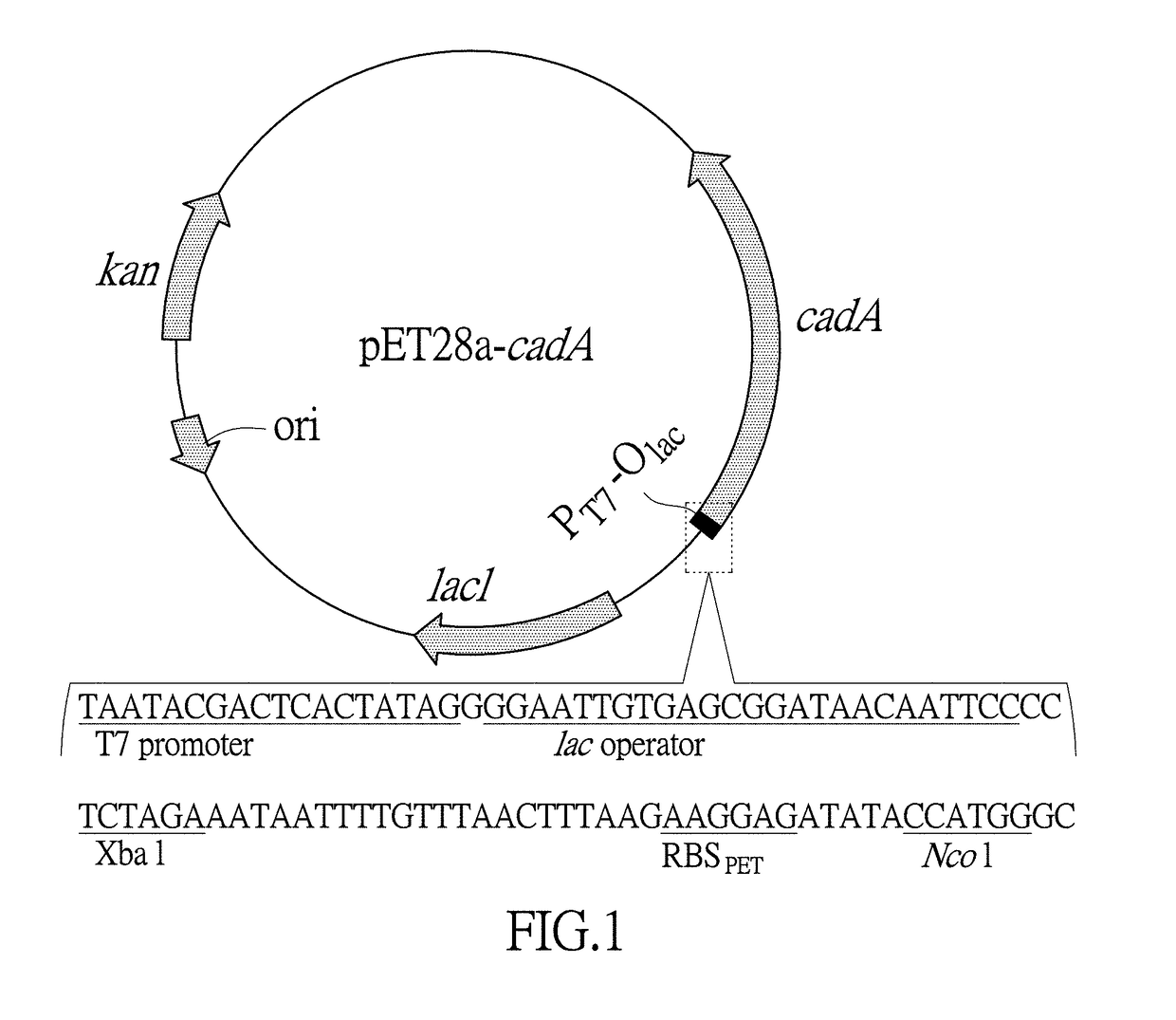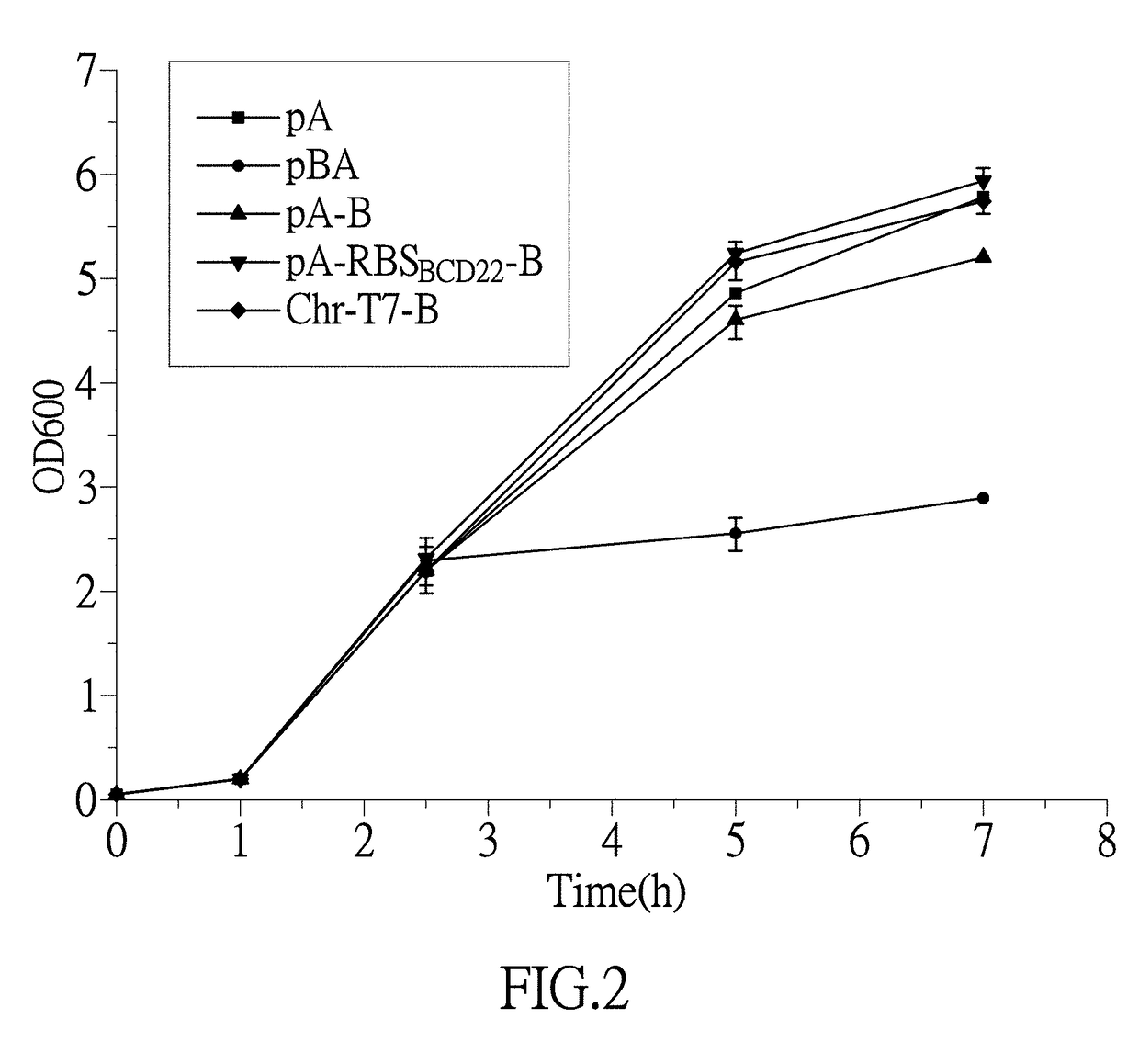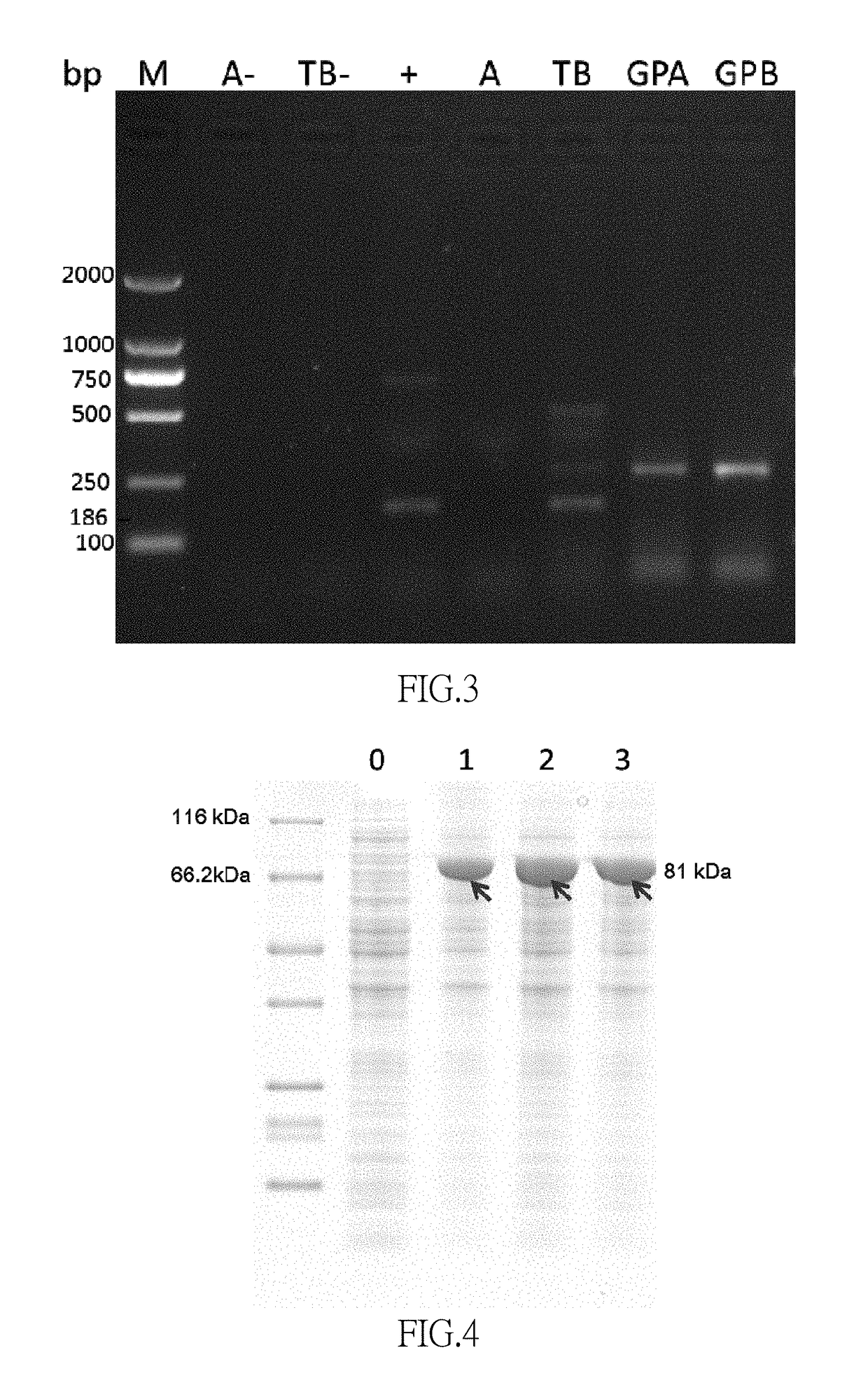E. coli engineering bacteria producing 1,5-pentanediamine through whole cell catalysis and application thereof
a technology of whole cell catalysis and e. coli engineering bacteria, which is applied in the direction of peptides, lyases, carbon-carbon lyases, etc., can solve the problems of increasing process difficulty and cost in actual production, requiring a huge consumption of petrochemical resources, and achieving high production intensity, high efficiency protein expression, and improved catalytic performance of 1,5-pentanediamine
- Summary
- Abstract
- Description
- Claims
- Application Information
AI Technical Summary
Benefits of technology
Problems solved by technology
Method used
Image
Examples
embodiment 1
n of 1,5-pentanediamine
[0098]A 10 μL sample was added into a 2 mL centrifuge tube containing a 100 μL sodium bicarbonate solution (4.2 g / 100 mL), after mixture, a 200 μL acetonitrile solution containing 1% (volume percentage) 2,4-dinitoflruorobenzene (DNFB) was added therein and then mixed. The derivatization reaction was conducted for 60 minutes at 60° C. (the reaction time was controlled strictly. The mixture was slightly shook for 30 minutes after the reaction started for a better mixing, and then the derivatization reaction was continued). Removed the mixture and cooled the mixture to a room temperature in dark, added a 160 μL acetonitrile, performed a vortex mixing for 30 seconds, and took a 15 μL sample for injection after a filtration through an organic membrane.
[0099]A mobile phase A was 5.4 g / L potassium dihydrogen phosphate solution (pH 7.2), a mobile phase B was 80% (volume percentage) acetonitrile solution, the mobile phases A and B were pumped in at a volume ratio of 5:...
embodiment 2
imization of Lysine Decarboxylase Gene cadA and Construction of Expression Vector as Well as Engineering Bacteria
[0102](1) Inserting an ORF of an optimized lysine decarboxylase gene cadA behind a T7 promoter and a RBS in an expression vectorpET28a (+). First, according to a recognition sequence feature of a restriction endonuclease Nco I which is behind the RBS in the expression vector pET28a (+), mutating a second codon of the lysine decarboxylase gene cadA to GCA which is the second codon with high frequency of an abundant protein. Second, replacing a subsequent sequence before No. +33 base for a synonymous codon by using rare codons, so as to increase the number of the rare codons in the sequence and then increase a gene expression. RNAfold software (http: / / rna.tbi.univie.ac.at / cgi-bin / RNAfold.cgi) was further used to predict a minimal free energy of a RNA secondary structure after replacement of No. −4 to +37 base sequences of the lysine decarboxylase gene cadA with the rare cod...
embodiment 4
ptimization of Lysine-Cadaverine Antiporter Gene cadB
[0112]1. Obtaining E. coli BL21 (DE3) / pET28a-cadA*55
[0113]By using a P1-55 and a P2 as primers for PCR amplification, pET28a-cadA*55 was constructed according to the method described in embodiment 2(1), the plasmid was transformed into the competent E. coli BL21 (DE3), and there was thus obtained the engineering bacteria E. coli BL21 (DE3) / pET28a-cadA*55 which abbreviated as engineering bacteria pA.
[0114]2. Obtaining E. coli BL21 (DE3) / pET28a-cadBA
[0115](1) By using the genome DNA of the wild type E. coli strain K12 W3110 as a template, a high fidelity polymerase KAPA HiFi™ HotStar, a P5 and a P6 as primers for the PCR amplification, and the PCR program that is: degeneration by heating at 98° C. for 30 seconds, annealing at 65° C. for 15 seconds, extension at 72° C. for 150 seconds, and 26 cycles the 3604 bp cadBA segment (cadB and cadA genes are both on the same operon cadBA, therefore the product segment contains the products o...
PUM
| Property | Measurement | Unit |
|---|---|---|
| Temperature | aaaaa | aaaaa |
| Temperature | aaaaa | aaaaa |
| Fraction | aaaaa | aaaaa |
Abstract
Description
Claims
Application Information
 Login to View More
Login to View More - R&D
- Intellectual Property
- Life Sciences
- Materials
- Tech Scout
- Unparalleled Data Quality
- Higher Quality Content
- 60% Fewer Hallucinations
Browse by: Latest US Patents, China's latest patents, Technical Efficacy Thesaurus, Application Domain, Technology Topic, Popular Technical Reports.
© 2025 PatSnap. All rights reserved.Legal|Privacy policy|Modern Slavery Act Transparency Statement|Sitemap|About US| Contact US: help@patsnap.com



